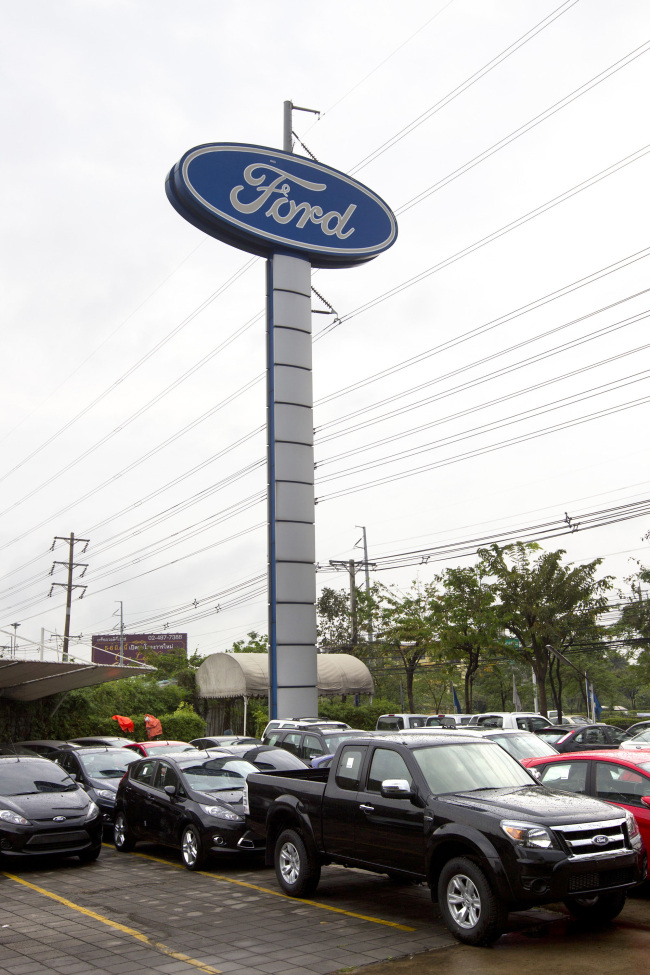 |
Cars sit outside a Ford Motor Co. dealership in Bangkok. (Bloomberg) |
Ford, along with Japanese automakers, sees Southeast Asia as a salve for slowing sales in markets like Europe, and has said its expansion in Thailand is part of an “aggressive growth plan” for the region. Dearborn, Michigan-based Ford said it is ready to join a Thai program for small, energy-efficient models once new licenses become available, in the face of opposition from General Motors Co., maker of the Chevrolet Spark mini car.
“Southeast Asia is going to assume immense importance in the next couple of years,” said Vivek Vaidya, vice president for the automotive and transportation sector at researcher Frost & Sullivan based in Singapore. “The market share of Japanese companies is over 80 percent, hence all other players are scrambling to win their market share in this region.”
Ford, maker of the Focus compact and Ranger pickup truck, is the eighth-biggest automaker in Thailand, with a 4 percent market share, according to researcher LMC Automotive. About 40 percent of that is thanks to sales of its pickup trucks, whose ability to haul everything from machinery to families has helped them make up two out of five vehicles sold in the nation.
Consumer preference in Thailand, though, is shifting toward small cars because of their lower prices as well as operating costs compared with pickup trucks, Vaidya said.
Subcompacts, including eco models, made up more than half of passenger-car sales in Thailand last year, according to IHS. The share of eco cars will probably rise to 29 percent in 2016 from 19 percent last year, the research company said.
Ford, the second-largest U.S. automaker, plans to elevate itself in Thailand with help from the government’s eco-car project, which IHS and LMC Automotive say may be extended this year.
Under the program, eco cars are defined as those that travel more than 20 kilometers on a liter of fuel, don’t emit more than 120 grams of carbon dioxide per kilometer, and meet other criteria including crash-test standards. Manufacturers also must invest at least 5 billion baht ($168 million), which should include car assembly as well as engine and parts production.
Automakers approved for the project introduced in 2007 get an exemption on corporate tax and on the import duty for machinery and equipment, and as much as a 90 percent reduction on import duties for raw materials and finished parts, according to Thailand’s Board of Investment.
The tax breaks spurred demand for hatchbacks like Nissan Motor Co.’s March and the Swift from Suzuki Motor Corp., which together with Honda Motor Co., Mitsubishi Motors Corp. and Toyota Motor Corp. are the five auto manufacturers licensed under the program.
The tax breaks are scheduled to end in 2015, making a government announcement imminent because automakers keen on applying need to plan ahead, said Michael Dunne, president of Hong Kong-based Dunne & Co., an auto research company focused on Asia.
“Automakers plan future products three to five years ahead of time,” Dunne said in an email. “If they develop a specific product for a market and then rules change, that’s going to be monumental financial setback.”
(Bloomberg)






![[Weekender] Korea's traditional sauce culture gains global recognition](http://res.heraldm.com/phpwas/restmb_idxmake.php?idx=644&simg=/content/image/2024/11/21/20241121050153_0.jpg)
